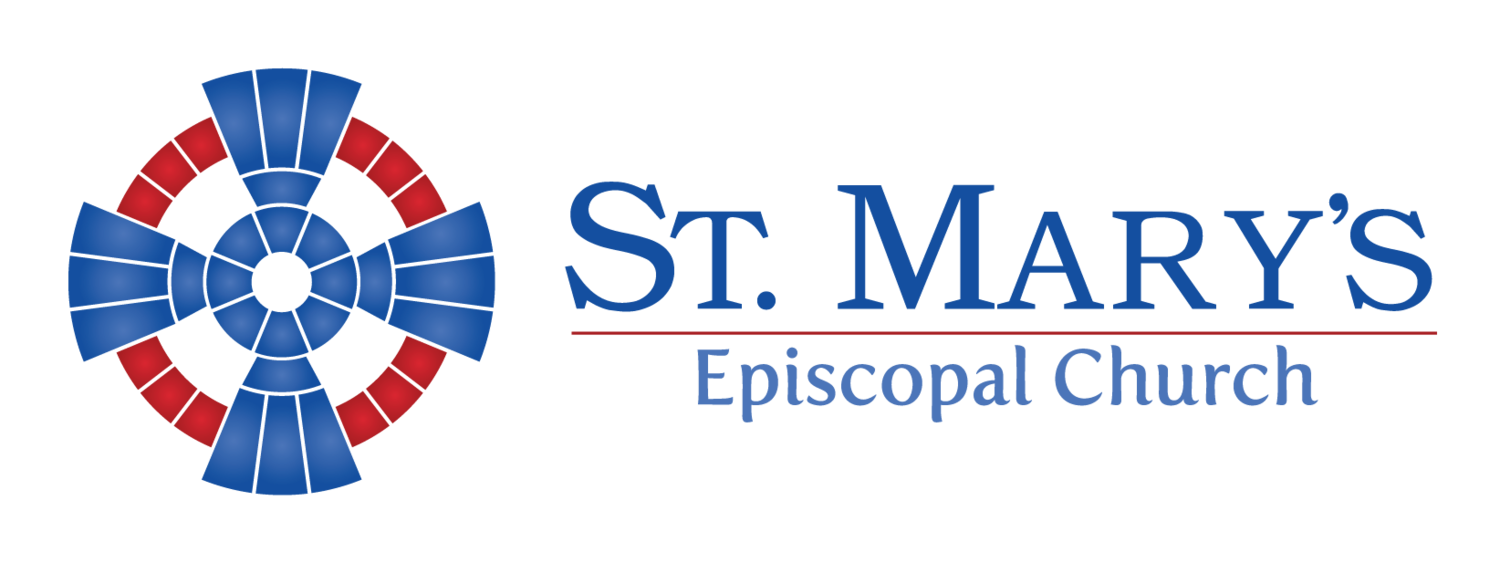Before we can talk about today's Gospel reading from the 21st Chapter of John, we need to step back for a moment and look at Chapter 20. More specifically, we need to go back to Easter Sunday morning when we heard the story of Mary Magdalen on the very first Easter Day while it was still dark, going down to the tomb and finding the tomb empty. The body was not there. She was confused, and so ran off to get Simon Peter and the beloved Disciple.
At this point John includes the strangest detail that I can't get out of my mind. It says that Simon Peter and the beloved Disciple had a foot race. Now, we live in Track Town USA, it's marathon Sunday, so we can understand why they would want to have a foot race in that moment. Why not? But why include the detail in the telling of the story all those years later? There are also many details about this foot race. We learn that the beloved Disciple wins the race. He gets there first, but when he gets there he merely peeks in the tomb and then waits. Along comes Peter, lagging behind, and he goes into the tomb. He looks down, sees the burial cloths, and then comes out. Then the beloved Disciples goes in, takes a look and is able to confirm what Peter saw, and then they both leave.
This competition these two men seem to have shows up again in today's Gospel reading. This is now the third time Jesus has showed himself to the Disciples. They are back at work fishing in the Sea of Galilee and are not being very successful. They are not catching any fish. Jesus appears from the shore at that moment. The beloved Disciple is the first one of all the Disciples to figure out that this is Jesus. He wins the race of recognition, as it were. Not to be outdone, Peter decides to win the next race. He puts some clothes on because he was naked, another odd detail that we won't discuss right now, and jumps in the sea. This must be the next leg of a triathlon because he swims to shore. He wins the race as the first person to get to and interact with Jesus on the shore.
The competition between these two men doesn't end here. We are almost at the end of the Gospel with today's reading, but there are a few verses left. Right after Peter and Jesus have this conversation, do you love me? Yes, I love you. Feed my sheep, Jesus goes on to tell Peter how he is going to die, which is the end of today's Gospel reading. The very next little bit is that Peter turns and looks at the beloved Disciple. Then the narrator tells us details about who the beloved Disciple is and why he is so important. Peter then turns back to Jesus and says, "And what about him?" Now Jesus must be rather exasperated at this point because he looks at Peter and says, Who cares? Who cares if he is going to live longer than you is more precisely what Jesus says, and then says, Follow me. Focus here. Stop worrying about that petty competition the two of you seem to have.
In the writing of the early church Fathers and Mothers, these two Disciples, Peter and the beloved Disciple, are two models or exemplars of the faith. They illustrate two ways of being faithful followers of Jesus. For them, the beloved Disciple was representative of the contemplative life. He doesn't jump right in the water. He takes his time to get to shore. But he is the first one to recognize Jesus. He is very attuned to God's presence in that moment. John is the one who leans on Jesus, the one who is very close to Jesus. Peter is the fervent one, they said. He is the one of action, the one who jumped in the water and swam to shore to get there as fast as he could. He is the one told by Jesus to go do things, to feed my sheep, and as a result Peter will be the one who will die earlier. He gets into a little bit of trouble with all that action. The early church writers said these two models are not meant to be in competition with one another. It is not that one is better than the other. They are both important. The life of prayer, attuning your life to God's presence is critically important, and so is that life of action, going into the world and embodying God's message of love and how you treat other people, to serve as Christ served. Both of these are critically important.
In a sense this Gospel reading is meant to be a mirror to hold up before your life and ask, which one of these am I more like? Some of us are more of the contemplative prayerful sense and some are more action oriented out there doing things. You hold that mirror and ask, which one am I more like, and in what ways do I need to deepen the parts of me that are not there. If I am more like the beloved Disciple, how can I be more action oriented like Peter? Of if I'm like Peter and action oriented, how can I be more like the beloved Disciple?
This reading points to two ways of embodying these models, the ways of following Jesus. The first is in the Eucharist. This story is about fish and bread, so how is it about the Eucharist? If we look at images of the early Church and how they imagined the Eucharist, there are images of bread and fish as well as images of bread and wine. They understood bread and fish to be Eucharistic also. I'm grateful we are not serving salmon today with the Eucharist, but potentially there were Eucharists that included fish, based on he images that depict something like that. So the early church understood this as a Eucharist meal that Jesus was offering the Disciples. Part of the life of prayer, the contemplative way of following Jesus, is about the Eucharist, about finding the presence of God in this bread. Not to say that God is only contained in this bread, but to practice seeing the presence of God so that when we go out into the world, back to our lives, we can start attuning our lives to God's presence around us all of the time. This is a particular moment when we recognize it in the Sacrament.
The other way is that nice long conversation Jesus had with Peter when he says, feed my sheep, tend my flock, go do things, actions of love in this world. Both of these ways, in being and doing, in contemplation and in action, draw us closer to Christ. Christ that is always present with us, the Christ we find in the Eucharist, Christ we find in the Sacraments, Christ we find in our lives. But also in action, the Christ we find in our neighbor. Just as Jesus taught us in Matthew 25, when I was hungry you fed me; I was thirsty and you gave me drink; whatever you did to the least of these you did to me, we find Christ in others, in their need. When we encounter them and serve them, we are serving Christ. These are not opposites. These are complementary things. As we deepen that life of prayer, and as we deepen that life of action, we are supporting the other. Action should lead us into prayer, and prayer should lead us into action. As we engage in these practices of faith we want to engage in more practices of faith. We will want to grow closer to God in prayer and grow closer to God in action. It might be in coming to church, engaging in daily prayer practices on one side. On the other it might be serving at the Saturday breakfast, or taking the cans and bottles to the recycling center to help pay for more huts to get people off the streets. These are different ways we are embodying the life of prayer and of action.
So my friends, this week I ask of you, I invite you, I encourage you to take some time with the mirror of this Gospel reading. Hold it up to your life and ask, where am I, who am I, and how can I deepen my faith through contemplativeness or through action, both of which are rooted and grounded in love.
AMEN







